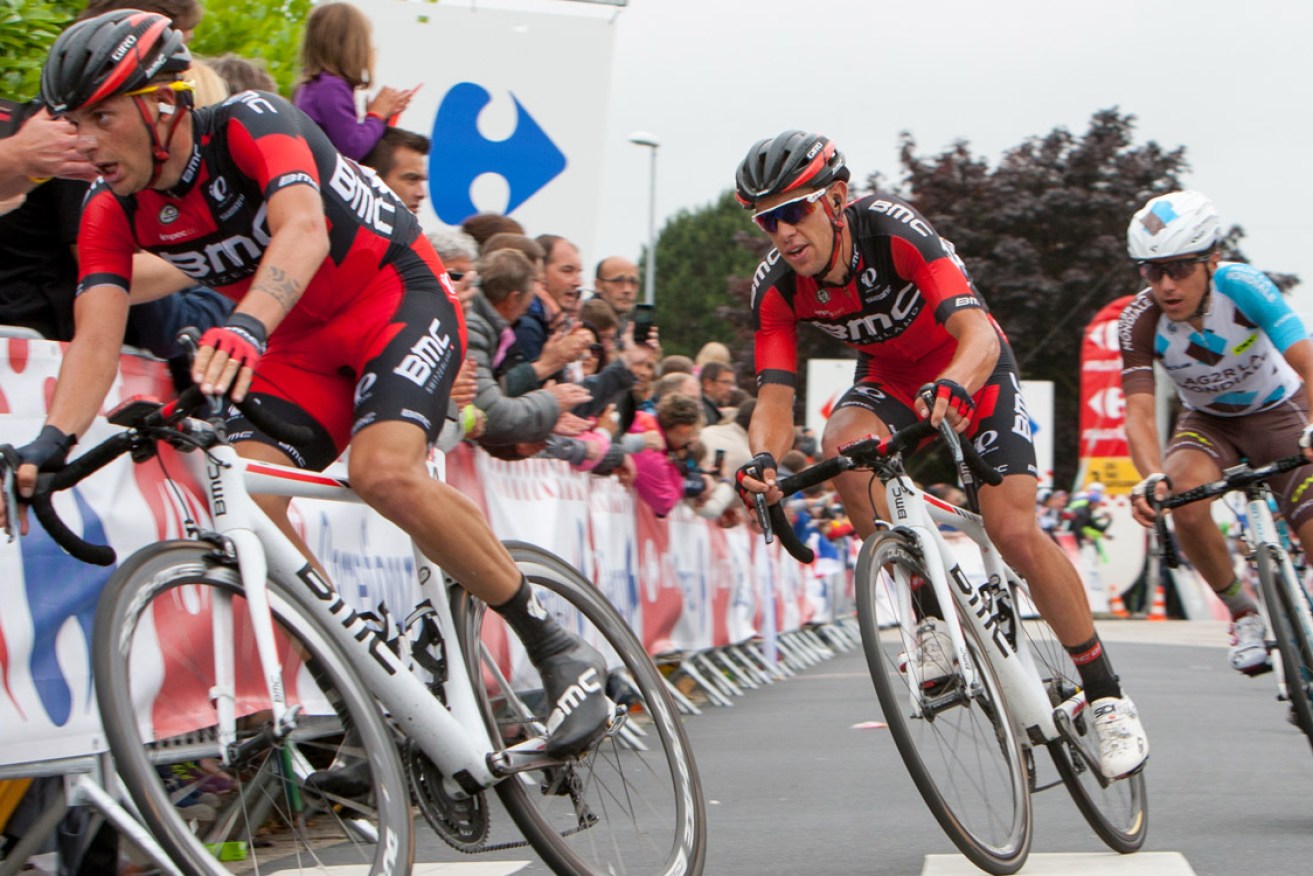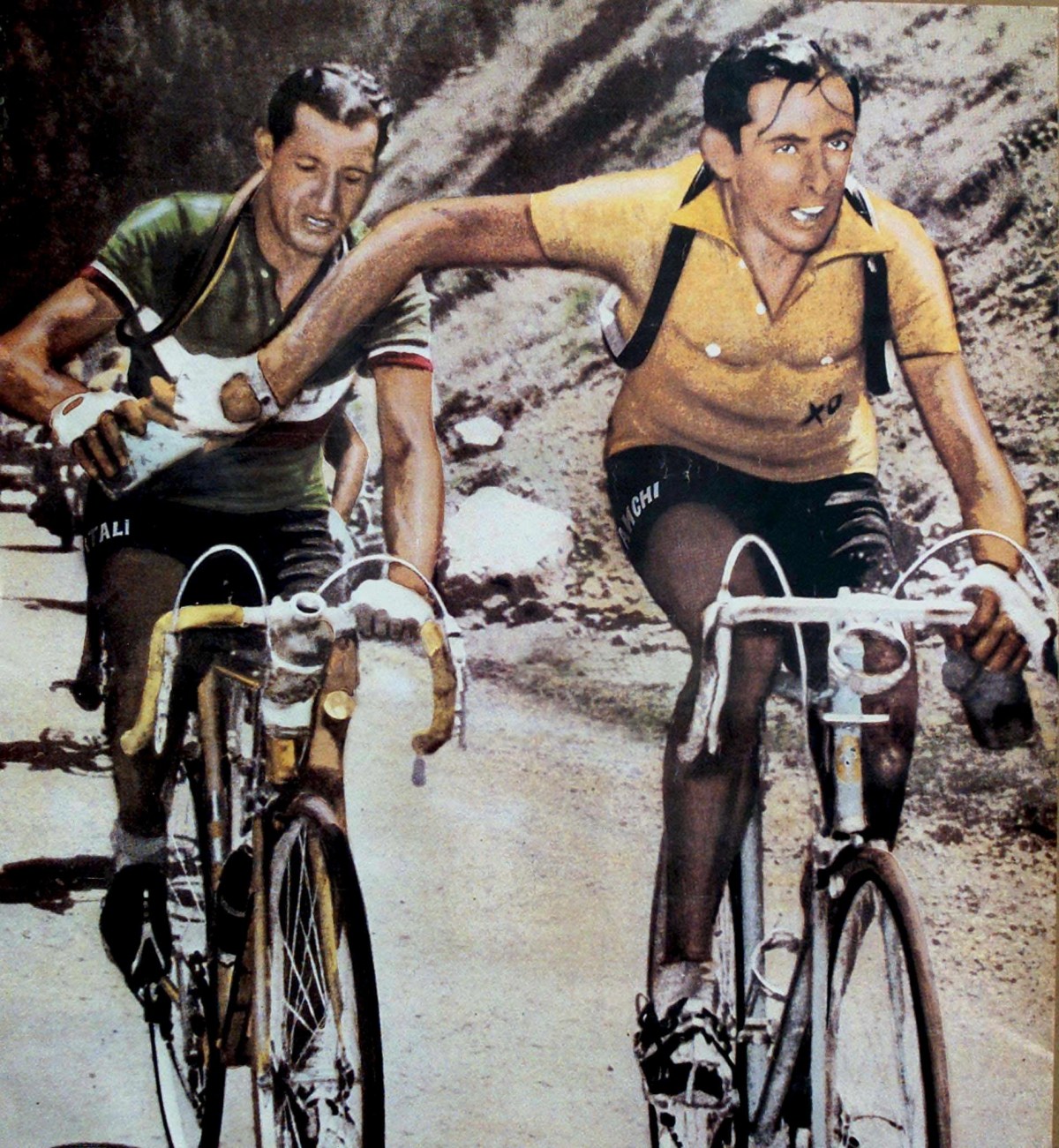Tour de France: The podium is Richie’s Porte of call
Fortune has been unkind to Richie Porte, set back more than a minute by a punctured tyre – but history tells us we shouldn’t give up hope on the Aussie cyclist just yet, writes Chris Komorek.

Richie Porte (BMC racing Team) trailing Damiano Caruso over the final climb on the way to the finish in Cherbourg Octeville, chasing back after a puncture. Photo: AAP
So much preparation goes into the race for each team that when something goes exceptionally well it’s known as good luck – not good racing. Similarly if something goes horribly wrong, it’s considered bad luck.
In the case of Australian Richie Porte, he was on the receiving end of bad luck when his back wheel punctured in the final five kilometres on Stage 2.
The speeds soar in the final five kilometres of a stage. Especially one that is going to be a sprint finish. Positioning is so important at these times and is the very reason why ‘sprint trains’ (where a line of riders form to create a drag for their leader) like Team Quickstep and the HTC of old, are so impressive.
Porte has every right to be dirty about his misfortune. Not only did he puncture, he also had to wait for the neutral service car for assistance. By the time he got back on his bike the deficit was over a minute.
Many are already predicting that Porte’s race is over. Finished. There’s absolutely no way he can get back, they say. But why can’t we dare to dream? Where’s the optimism?
When Cadel Evans buried himself in the time trial on the final day of the 2011 Tour de France, the race he so triumphantly won, he started a full 57 seconds behind then leader, and eventual runner up, Andy Schleck.
In the 42.5 kilometre route around Grenoble, ‘Cuddles’ as he is affectionately known, crossed the line 2 minutes and 31 seconds ahead of Schleck, winning the race by 1 minute 34seconds and creating history.
It was an amazing feat and just one example of why we should not rule out Porte just yet. Especially given there are two time trials still to come, both of which suit him better than most in the peloton.
But fair enough if you’re not convinced. Let’s open the history books to one of the most incredible comebacks of all time.
The year is 1949. The riders involved are Italy’s Gino Bartali, Fausto Coppi and Frenchman Jacques Marinelli. Coppi & Bartali started the race poorly and found themselves 15 minutes behind Marinelli. Of course the race was completely different in 1949 and a 15 minute advantage accounted for little.
Coppi was involved in an accident with both Marinelli and an unruly fan, with Coppi’s bike mangled as a result. The minutes rolled by and at the end of the day the Italian was 36-minutes behind his French rival and Italian teammate.
A few days later Coppi put in a monumental effort in the time trial, gaining eight minutes on his competitors and giving him just a slither of hope. There was plenty of racing still to come and the most of it would be over steep mountains, Coppi’s favoured terrain, yet still no one gave him a chance.

The famous photograph showing the passing-over of a water bottle between Italian cyclists Gino Bartali (L) and Fausto Coppi, who were rivals, during a stage of the Tour de France of 1949. Photo: AAP/EPA/ANSA
In ‘49 the race went over some of the most famous mountains that are still used today. Coppi was a man on a mission. He attacking during the mountain stages and, while puncturing twice (the mountain roads were unsealed) along the way, crossed the line still 14 minutes behind.
Once the peloton hit the alpine stages, Coppi yet again clicked it up a gear. First by helping his team mate Bartali move into first place over Marinelli and the following day, usurping Bartali to take the Maillot Jaune himself. He was in the lead when only a few days prior he found himself 36 minutes behind.
To cap it all off, the Italian then dominated the final time-trial, winning by seven minutes and claiming the Tour de France by just under 11 minutes overall. An absolutely phenomenal effort and a perfect source of inspiration for Porte.
While we’re not saying that Porte is somehow the reincarnation of Coppi and he’s going to recreate 1949 (as great as that spectacle would be) the very nature of this race rewards determination. It’s what Coppi proved he had in 1949, what fuelled Evans in his historic 2011 win and what can get Porte over the line this year.
He’s 1’45” behind his closest rivals Christopher Froome and Nairo Quintana, both of whom have had a smooth trip so far. With only three stages complete so far the race is not nearly over yet – in both a literal and metaphorical sense – and to say it is blasphemous.
Richie Porte knows what it takes to win the Tour de France. He’s helped four of the last five winners do it. If anyone can bounce back from adversity, it’s our Tasmanian.




